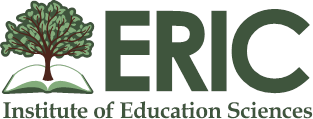Evaluating Middle School Students’ Spatial-Scientific Performance within Earth/Space Astronomy in Terms of Gender and Race/Ethnicity
Keywords:
middle school, science eudcation, student learning, gender, race/ethnicityAbstract
Differences were examined between groups of sixth grade students’ spatial-scientific development pre/post implementation of an Earth/Space unit. Treatment teachers employed a spatially-integrated Earth/Space curriculum, while control teachers implemented their Business as Usual (BAU) Earth/Space units. A multi-level modeling approach was used in a hierarchical manner to evaluate student performance on the Purdue Spatial Visualization: Rotation test (PSVT-Rot) and on the Lunar Phases Concept Inventory (which included four spatial domains), while controlling for two variables (gender and race/ethnicity) at the student level and one variable (teaching experience) at the teacher level. Results showed Treatment girls achieved higher LPCI Periodic Patterns (PP) spatial domain post-scores than girls in the BAU group. A gender gap was also observed (in favor of boys) within the BAU group for PP domain post-scores, while no gap was shown within the Treatment group. In addition, results for PP suggest Students of Color tended to have lower PP scores than White students (Effect Size = .29), and that higher pretest PP scores tended to lead to higher posttest PP scores, after adjusting for other student and teacher characteristics. The only statistically significant predictor of the PSVT-Rot posttest scores were scores on the respective pretest.Downloads
Published
2017-03-27
Issue
Section
Articles
License
The articles may be used for research, teaching, and private study purposes. Any substantial or systematic reproduction, redistribution, reselling, loan, sub-licensing, systematic supply, or distribution in any form to anyone is expressly forbidden. Authors alone are responsible for the contents of their articles. The journal owns the copyright of the articles. The publisher shall not be liable for any loss, actions, claims, proceedings, demand, or costs or damages whatsoever or howsoever caused arising directly or indirectly in connection with or arising out of the use of the research material. All authors are requested to disclose any actual or potential conflict of interest including any financial, personal or other relationships with other people or organizations regarding the submitted work.How to Cite
Evaluating Middle School Students’ Spatial-Scientific Performance within Earth/Space Astronomy in Terms of Gender and Race/Ethnicity. (2017). Journal of Education in Science, Environment and Health, 3(1), 40-51. https://www.jeseh.net/index.php/jeseh/article/view/35







